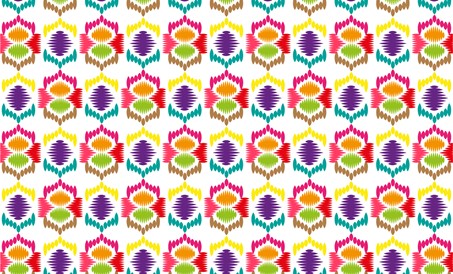In a pioneering fusion of design, textiles, and technology, Bangladeshi researchers have introduced an AI-driven system that generates original handloom fabric designs, marking a significant milestone in academia-led ICT innovation. The research, published on May 20, 2025, presents a NeuralLoom platform that assists designers by automatically creating motifs rooted in classical handloom aesthetics. Using advanced generative neural networks and style transfer algorithms, the system can understand handloom pattern structures such as Geometric lines and floral motifs—and then craft entirely new designs. Designers can input rough sketches, and the AI fills in the rest, producing completed motifs aligned with heritage aesthetics. The system was assessed via designer reviews, showing high satisfaction with creativity and relevance. At the same time, wider research in ICT is looking into smart textiles that can be worn. A paper from March 2025 titled “Aesthetics of Connectivity: Envisioning Empowerment Through Smart Clothing” demonstrates how artistry and tech converge in smart garments. Though centered on usability and consumer experience, this research underscores how design aesthetics must adapt when integrating sensors, connectivity, and interactivity an insight that can enhance handloom textiles when paired with smart features. Together, these two strands of research suggest an exciting future: heritage handloom fabrics embedded with smart technologies, generated and refined by AI guided by both designers and machine learning. Supporting local artists: NeuralLoom eliminates creative obstacles, enabling weavers and small designers to create new patterns that go beyond conventional designs. Bridging craft and tech: Smart-clothing frameworks help visualize how embellished or interactive woven textiles could behave in real-world use. Sustainable innovation: By reducing pattern sampling or failed weaves, AI-supported customization optimizes material usage and reduces waste. Design studios and startups in Dhaka’s textile hubs can leverage NeuralLoom to launch AI-enhanced collections. Universities and ICT incubators could form interdisciplinary innovation labs, uniting handloom artisans, designers, and technologists. The potential for global exports grows when combined with wearable technology. Picture handloom scarves with sensors that promote wellness or jackets that bring heritage to life through interaction. One next step could be pilot projects with real handloom clusters, where AI-generated patterns are woven on local looms, and smart components (like conductive threads or temperature sensors) are integrated turning the design-innovation concept into tangible products. This research illuminates a hopeful path for Bangladeshi design: reviving traditional craft with modern tools, enhancing cultural identity, and pioneering next-gen textile experiences. Through thoughtful integration of AI, smart textiles, and artisan talent, Bangladesh can lead a global resurgence in intelligent, heritage-inspired design.
AI‑Designed Handloom Patterns Spark Next‑Gen Crafts Revival
6

